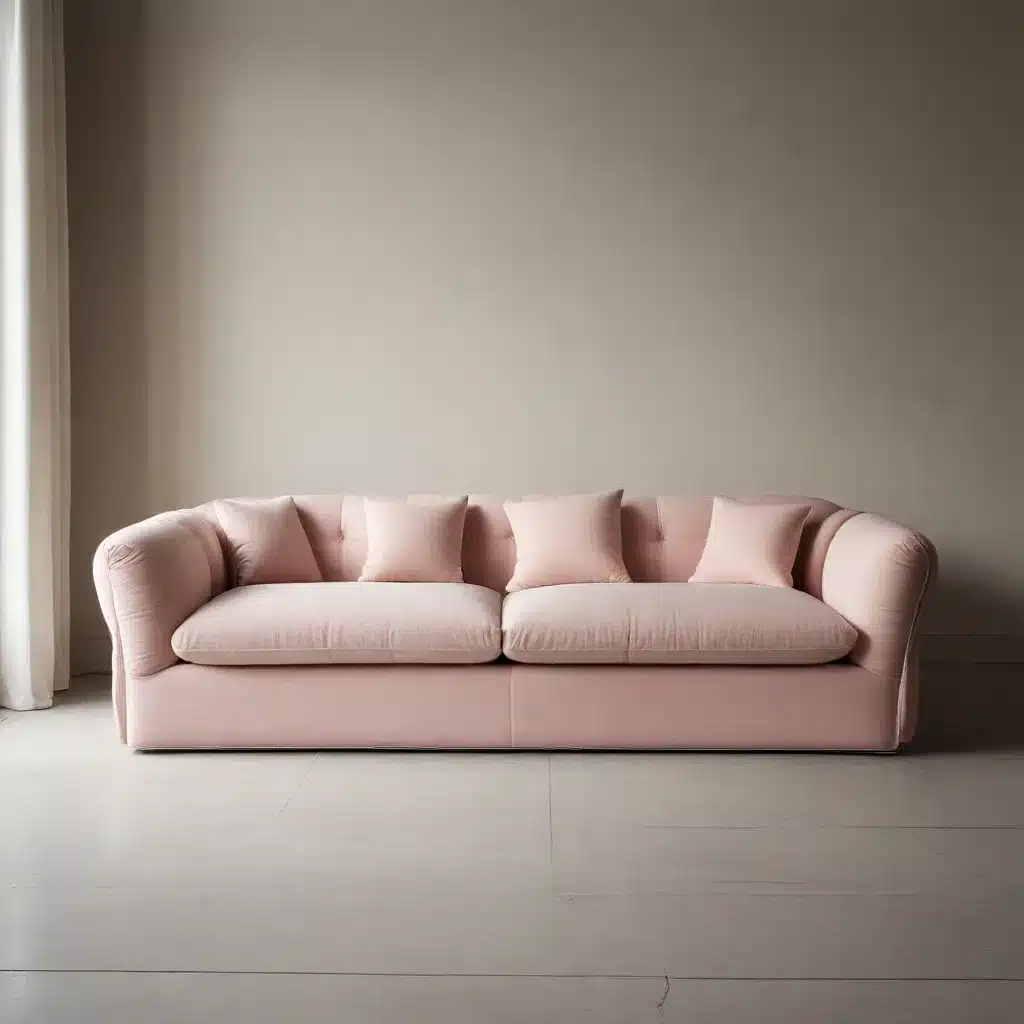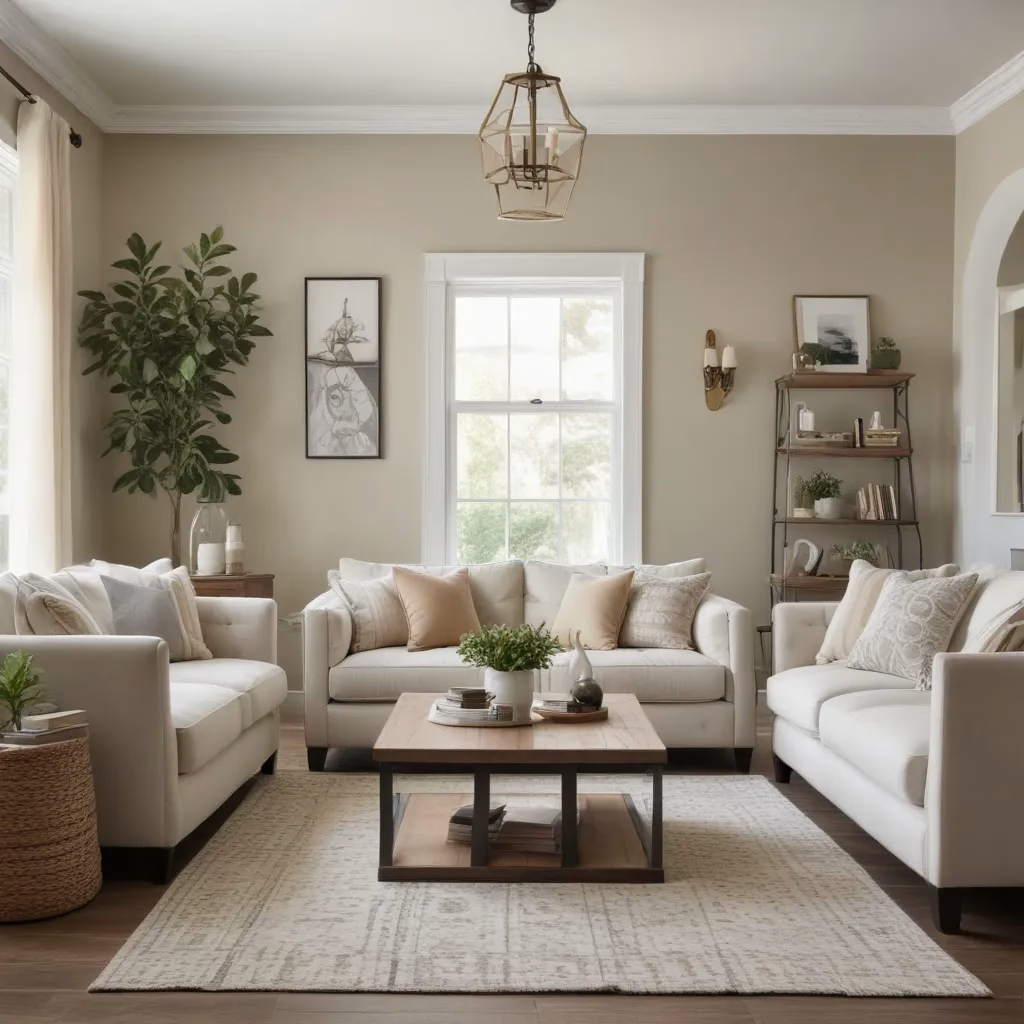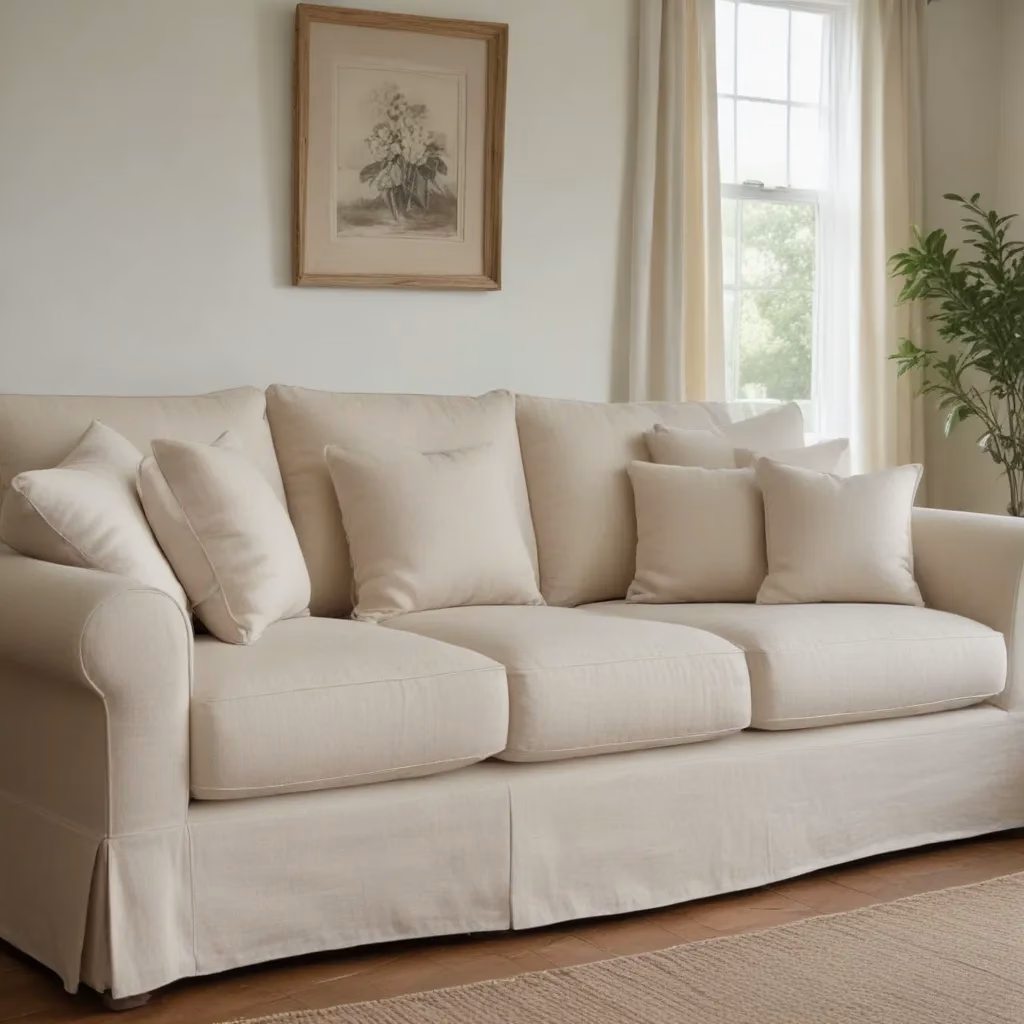
As a furniture specialist with years of experience in the industry, I’ve seen countless sofa designs come and go. But every once in a while, a concept emerges that truly captures my attention and makes me rethink what’s possible in furniture design. Today, I’m excited to share with you a revolutionary approach that’s reimagining the classic sofa form through unexpected softness.
The Evolution of Sofa Design
Sofa design has come a long way since its inception. From the rigid, formal structures of the Victorian era to the sleek, minimalist lines of mid-century modern, each period has left its mark on how we perceive and interact with this essential piece of furniture.
In recent years, we’ve seen a shift towards comfort and functionality, with modular designs and performance fabrics taking center stage. However, the basic form of the sofa has remained relatively unchanged – until now.
This new wave of design is challenging our preconceptions about what a sofa should look and feel like. By incorporating unexpected elements of softness, designers are creating pieces that are not just functional, but truly inviting and comforting.
Embracing Organic Forms
One of the most striking aspects of this new design philosophy is the move away from rigid, geometric shapes towards more organic, flowing forms. These sofas look as if they’ve been molded by hand, with curves and contours that seem to defy the traditional boxy structure we’re accustomed to.
I remember the first time I encountered one of these pieces at a furniture show. It was like nothing I’d ever seen before – a sofa that looked more like a cloud than a piece of furniture. The absence of hard edges and the continuous, undulating surface created an immediate sense of comfort and relaxation.
This approach to design isn’t just about aesthetics; it’s about creating a more natural and ergonomic seating experience. The human body isn’t made up of straight lines and right angles, so why should our furniture be?
The Magic of Materials
The secret behind these incredibly soft and inviting sofas lies in the materials used to create them. Advances in foam technology and upholstery techniques have allowed designers to push the boundaries of what’s possible in terms of comfort and support.
High-density memory foams, which conform to the body’s shape, are being combined with softer, more pliable outer layers to create a seating surface that’s both supportive and incredibly plush. This combination allows for a level of comfort that was previously unattainable in traditional sofa designs.
But it’s not just about the filling – the choice of upholstery fabric plays a crucial role in achieving that unexpectedly soft look and feel. Designers are opting for materials with a high pile or nap, such as velvet or bouclé, which add visual softness and tactile appeal.
Color and Texture: The Visual Aspect of Softness
When we think of softness, we often focus on the tactile experience. However, the visual aspect of softness is equally important in creating an inviting and comfortable sofa. Designers are using color and texture in innovative ways to enhance the perception of softness.
Soft, muted color palettes are becoming increasingly popular. Pastel pinks, light blues, and warm neutrals all contribute to a sense of tranquility and comfort. These colors are often paired with textured fabrics that catch the light in interesting ways, adding depth and visual interest to the piece.
I’ve noticed that many of these new designs incorporate elements of light and shadow play. The organic forms and textured fabrics interact with light in a way that creates a sense of movement and softness, even when the sofa is viewed from a distance.
The Psychology of Softness
There’s a psychological component to this trend that’s worth exploring. In our fast-paced, technology-driven world, we’re constantly bombarded with hard surfaces and sharp edges. Our smartphones, computers, and even our architecture tend to favor clean lines and minimalist design.
This new approach to sofa design offers a counterpoint to that hardness. It provides a visual and tactile respite from the rigidity of modern life. When we see and experience these unexpectedly soft forms, it triggers a relaxation response in our brains.
I’ve observed this effect firsthand when clients interact with these sofas for the first time. There’s often an audible “wow” or a visible relaxation of the shoulders. It’s as if the mere sight of such softness allows people to let their guard down and truly relax.
Practical Considerations
While the aesthetic and psychological benefits of these unexpectedly soft sofas are clear, there are practical considerations to keep in mind. Durability and maintenance are always important factors when choosing furniture, especially for high-traffic areas or homes with children and pets.
Fortunately, many of the materials used in these designs are surprisingly resilient. High-quality velvet, for example, can be quite durable and stain-resistant when treated properly. And advances in fabric technology have led to the development of performance fabrics that offer the look and feel of luxury materials with enhanced durability and ease of cleaning.
That being said, it’s important to consider your lifestyle and needs when choosing a sofa. While these soft, organic forms are undeniably appealing, they may not be the best choice for every home. It’s always a good idea to discuss your specific requirements with a furniture specialist who can guide you towards the best option for your space.
Incorporating Softness into Your Space
If you’re intrigued by this trend but not ready to commit to a full sofa replacement, there are ways to incorporate elements of unexpected softness into your existing decor. Here are a few suggestions:
-
Add soft accessories: Throw pillows and blankets in plush fabrics can instantly soften the look and feel of your current sofa.
-
Experiment with lighting: Soft, diffused lighting can enhance the perception of softness in a room.
-
Consider a statement chair: A single piece with an unexpectedly soft design can serve as a focal point in your living space.
-
Play with textures: Incorporate soft textures in your rug, curtains, or wall hangings to create a cohesive sense of softness throughout the room.
Remember, the goal is to create a space that feels inviting and comfortable to you. Don’t be afraid to mix and match different elements to achieve the perfect balance for your home.
The Future of Sofa Design
As we look to the future, I believe we’ll continue to see innovation in sofa design that pushes the boundaries of comfort and aesthetics. The trend towards unexpected softness is just the beginning of a broader shift in how we think about furniture and its role in our lives.
We’re likely to see further developments in materials science that allow for even more innovative designs. Imagine sofas that can adapt their shape to your body’s needs, or fabrics that can change texture at the touch of a button.
There’s also a growing focus on sustainability in furniture design. I expect to see more eco-friendly materials and production methods being used to create these unexpectedly soft sofas. This could include recycled and upcycled materials, as well as innovative new fabrics made from sustainable sources.
The Role of Technology
While we’re focusing on softness and comfort, it’s worth noting that technology is playing an increasingly important role in sofa design. Smart home integration is becoming more common, with sofas incorporating features like built-in charging ports, adjustable lighting, and even massage functions.
These technological advancements don’t detract from the softness and comfort of the sofa – in fact, they can enhance it. Imagine a sofa that not only looks and feels incredibly soft but can also adjust its temperature to keep you comfortable or play soothing music through integrated speakers.
The key is to balance these technological features with the core principles of comfort and design. A sofa that’s packed with gadgets but uncomfortable to sit on misses the point entirely.
Customization and Personalization
Another trend I’m seeing in sofa design is a move towards greater customization and personalization. Consumers are no longer satisfied with one-size-fits-all solutions; they want furniture that reflects their unique style and meets their specific needs.
Many furniture companies are responding to this demand by offering modular designs that can be configured in multiple ways. This allows you to create a sofa that fits perfectly in your space and can be adapted as your needs change over time.
Customization also extends to the choice of fabrics and finishes. With a wide range of options available, you can create a sofa that’s truly unique to your home. This level of personalization ensures that your sofa isn’t just a piece of furniture, but a reflection of your personal style.
The Importance of Proper Care and Maintenance
As with any investment in quality furniture, proper care and maintenance are crucial to ensuring the longevity of your unexpectedly soft sofa. Here are a few tips to keep in mind:
-
Regular cleaning: Vacuum your sofa regularly to remove dust and debris. For fabric upholstery, use a soft brush attachment to avoid damaging the fibers.
-
Prompt stain removal: Deal with spills immediately to prevent staining. Blot (don’t rub) the affected area with a clean, damp cloth.
-
Professional cleaning: Have your sofa professionally cleaned at least once a year to remove deep-seated dirt and refresh the fabric.
-
Rotate cushions: If possible, rotate and flip cushions regularly to ensure even wear.
-
Protect from sunlight: Direct sunlight can fade and damage upholstery over time. Use curtains or blinds to protect your sofa during the sunniest parts of the day.
By following these simple steps, you can keep your sofa looking and feeling as soft and inviting as the day you bought it.
The Impact on Interior Design
The trend towards unexpectedly soft sofas is having a ripple effect on interior design as a whole. Designers are increasingly looking for ways to create cohesive, comfortable spaces that complement these softer furniture pieces.
We’re seeing a move away from stark, minimalist interiors towards more layered, textured designs. Soft furnishings like rugs and curtains are being used to create a sense of warmth and comfort throughout the room.
This shift is also influencing color choices in interior design. Softer, more muted color palettes are becoming popular, creating a sense of calm and tranquility in living spaces.
The Role of Lighting
Lighting plays a crucial role in enhancing the softness of these new sofa designs. Soft, diffused lighting can accentuate the curves and textures of the sofa, creating a warm and inviting atmosphere in your living space.
Consider using floor lamps with fabric shades or wall sconces that cast a gentle glow. Avoid harsh overhead lighting, which can create sharp shadows and detract from the soft aesthetic we’re aiming for.
Dimmable lights are also a great option, allowing you to adjust the lighting to suit different moods and times of day. Imagine sinking into your soft, comfortable sofa as the lights gradually dim, creating the perfect ambiance for a relaxing evening at home.
The Emotional Connection
One of the most interesting aspects of this trend towards unexpected softness in sofa design is the emotional connection it fosters. A sofa is more than just a piece of furniture; it’s often the heart of a home, where families gather, friends catch up, and memories are made.
These softer, more inviting designs seem to encourage a deeper emotional connection. They invite you to linger, to relax, to truly make yourself at home. In a world that often feels hard and unforgiving, there’s something deeply comforting about coming home to a space that’s soft and welcoming.
I’ve had clients tell me that their new, unexpectedly soft sofa has changed the way they use their living space. They find themselves spending more time there, feeling more relaxed and at ease. It’s as if the softness of the sofa encourages a softening of the mind and spirit as well.
The Balance of Form and Function
While we’ve been focusing on the aesthetic and comfort aspects of these new sofa designs, it’s important to remember that a good sofa must also be functional. The challenge for designers is to create pieces that are not only unexpectedly soft and visually appealing but also practical and durable.
This is where the expertise of furniture specialists like myself comes into play. We work closely with designers and manufacturers to ensure that these innovative designs meet the real-world needs of consumers. This might involve tweaking the internal structure to provide better support, or selecting fabrics that are both soft to the touch and resistant to wear and tear.
The goal is to create sofas that are not just beautiful and comfortable, but also practical and long-lasting. After all, a sofa is a significant investment, and it should be able to withstand the rigors of daily use while maintaining its soft, inviting appearance.
The Environmental Consideration
As our society becomes more environmentally conscious, there’s a growing demand for sustainable furniture options. This trend towards unexpected softness in sofa design presents both challenges and opportunities in terms of sustainability.
On one hand, the use of high-quality, durable materials can lead to longer-lasting furniture that doesn’t need to be replaced as frequently. This can help reduce waste and conserve resources in the long run.
On the other hand, some of the materials used to create these soft, plush sofas may not be the most environmentally friendly. Synthetic foams and fabrics, for example, can have a significant environmental impact.
However, many furniture manufacturers are rising to this challenge. They’re developing eco-friendly alternatives that can provide the same level of softness and comfort without the environmental cost. This includes using natural, renewable materials like organic cotton and wool, as well as recycled and recyclable synthetic materials.
As a furniture specialist, I’m excited to see these developments. It’s proof that we can have beautiful, comfortable furniture without compromising our commitment to environmental sustainability.
The Art of Mixing and Matching
While a soft, inviting sofa can be a wonderful focal point in a room, it’s important to consider how it will work with your other furnishings. The art of mixing and matching different styles and textures can create a rich, layered look that enhances the overall comfort of your space.
Don’t be afraid to pair your unexpectedly soft sofa with pieces that have more structure or angular lines. This contrast can actually highlight the softness of the sofa while creating visual interest in the room.
For example, a sleek metal coffee table or a geometric rug can provide a beautiful counterpoint to the organic curves of a soft sofa. The key is to find a balance that feels harmonious and reflects your personal style.
The Importance of Trying Before Buying
When it comes to choosing a sofa, especially one with an unconventional design, there’s no substitute for personal experience. While pictures and descriptions can give you a general idea of what to expect, you really need to sit on a sofa to understand how it feels and whether it will meet your needs.
That’s why I always recommend visiting a showroom like Sofa Spectacular before making a purchase. This gives you the opportunity to experience the softness and comfort firsthand, and to see how different designs look in a real-world setting.
Remember, a sofa is a long-term investment in your comfort and your home’s aesthetic. It’s worth taking the time to find the perfect piece that balances unexpected softness with practicality and style.
Conclusion
The trend towards unexpected softness in sofa design is more than just a passing fad. It represents a fundamental shift in how we think about comfort and aesthetics in our living spaces. By challenging traditional notions of what a sofa should look and feel like, designers are creating pieces that offer a new level of comfort and visual appeal.
As we’ve explored, this trend encompasses not just the physical softness of the sofa, but also the visual softness created through organic forms, muted colors, and textured fabrics. It’s a holistic approach to design that considers the psychological and emotional impact of our furniture choices.
While there are practical considerations to keep in mind, the benefits of these unexpectedly soft sofas are clear. They offer a welcome respite from the hardness of modern life, creating spaces that are truly inviting and comfortable.
As we look to the future, I’m excited to see how this trend will continue to evolve. With ongoing advances in materials science and a growing focus on sustainability, I believe we’ll see even more innovative and exciting sofa designs in the years to come.
Whether you’re in the market for a new sofa or simply interested in staying up-to-date with the latest furniture trends, I hope this exploration of unexpected softness has given you some food for thought. Remember, your home should be a reflection of your personal style and a source of comfort and joy. Don’t be afraid to embrace the unexpected – you might just find that it’s exactly what your space needs.



